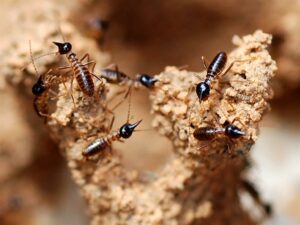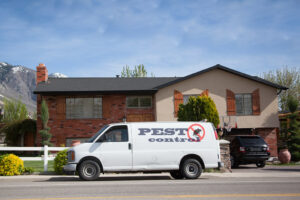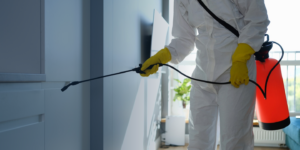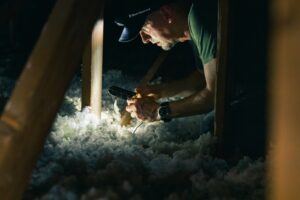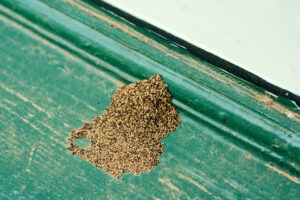For homeowners in the United States, termites can be a nightmarish reality. These tiny, destructive insects silently invade properties, causing extensive damage and financial losses. To protect your home from the devastating effects of a termite infestation, it’s crucial to be aware of the warning signs. In this comprehensive article, we will explore the common signs of a termite infestation that every US homeowner should be vigilant about. Armed with this knowledge, you can take proactive measures to combat these relentless pests and safeguard your property.
Swarmers: The Harbingers of Infestation
One of the most apparent signs of a termite infestation is the emergence of termite swarmers, also known as reproductive termites. During the spring, these winged insects swarm in large numbers, seeking to establish new colonies. They are often attracted to light and are commonly seen around windows, doors, and light fixtures. After their nuptial flight, swarmers shed their wings, leaving behind piles of discarded wings near entry points. Spotting these winged invaders is a clear indicator of an existing termite problem.
Mud Tubes: The Highways of Subterranean Termites
Subterranean termites, the most common termite species in the US, build mud tubes to protect themselves from predators and maintain a humid environment. These pencil-sized tubes extend from the ground and connect their underground nests to sources of food aboveground. If you discover mud tubes crawling up walls or along the ground, especially near the foundation of your home, it is a strong indication of an active termite infestation. Prompt action is vital to prevent further damage.
Wood Damage: A Silent Destruction
Termites are notorious for their voracious appetite for wood. They feed on wooden structures from the inside out, leaving a thin veneer of wood or paint on the surface. When tapping or probing suspected areas with a screwdriver, hollow-sounding or compromised wood may be revealed. Pay close attention to wooden structures like window frames, door frames, floorboards, and beams, as termites prefer these areas for their feeding and nesting activities.
Frass Deposits: A Telltale Sign of Drywood Termites
Drywood termites, as the name suggests, infest dry wood and produce wood-colored pellets known as frass. These tiny fecal pellets are pushed out of their galleries and can accumulate around infested wooden items or in corners. Frass resembles sawdust or sand and is a distinct sign of drywood termite activity. Regularly inspecting areas where frass is likely to accumulate, such as windowsills or baseboards, can provide early warning signs of an infestation.
Sagging Floors and Hollow-Sounding Wood
As termites consume wooden structures from within, they weaken the integrity of the affected wood. This can lead to sagging or buckling floors, especially in areas prone to moisture, such as bathrooms or basements. Furthermore, when tapping on the infested wood, it may produce a hollow, papery sound due to the hollowness caused by termite activity. If you notice these signs, it is essential to seek professional inspection and treatment to prevent further damage.
Clicking Sounds: The Soldier Termites’ Alarm
Termites have a unique defense mechanism involving soldier termites, who emit a soft clicking sound when disturbed. This clicking serves as an alarm to alert the colony of potential threats. While it may be difficult to detect this sound without proper equipment, placing your ear against a hard surface near a suspected termite nest might reveal these subtle noises. If you suspect termite activity and hear clicking sounds, it’s a sign that you should seek professional assistance promptly.
Tight-Fitting Doors and Windows
As termites devour wooden structures, they can cause changes in their shape and size. This can lead to doors and windows becoming difficult to open or close smoothly. If you notice that your doors and windows are sticking or not fitting as they used to, it may be due to termite damage. A thorough inspection can help confirm the presence of termites and guide you in addressing the issue.
Presence of Wings or Swarming Insect Bodies
Apart from the presence of swarmers, it’s essential to look for signs of previous termite swarms. This includes finding discarded wings or dead swarming insects around your property. Termites shed their wings after the nuptial flight, and finding these discarded wings can indicate that a termite colony has successfully established nearby.
Conclusion
Termites pose a significant threat to homeowners in the United States, and early detection is the key to minimizing the damage they can inflict. By being vigilant for common signs such as swarmers, mud tubes, wood damage, frass deposits, sagging floors, clicking sounds, and changes in door and window fittings, homeowners can take prompt action to address termite infestations. Remember that seeking professional assistance from a licensed pest control expert is crucial for a thorough inspection and effective treatment plan. By staying informed and proactive, you can protect your home from the devastating effects of a termite infestation and ensure a safe and secure living environment.


